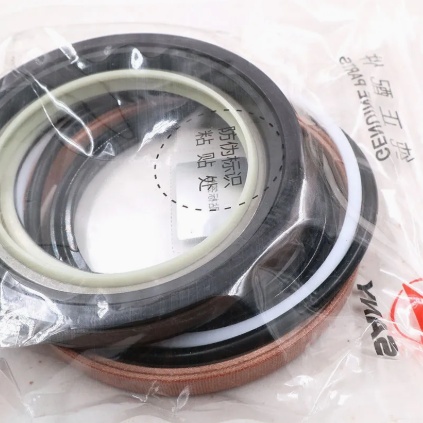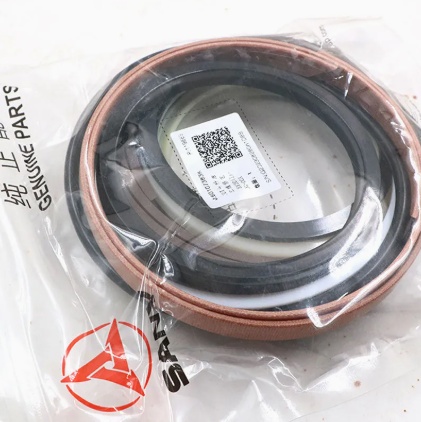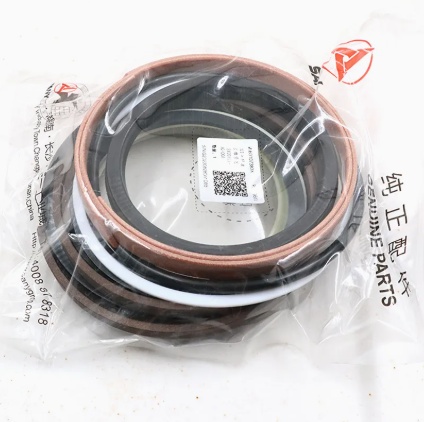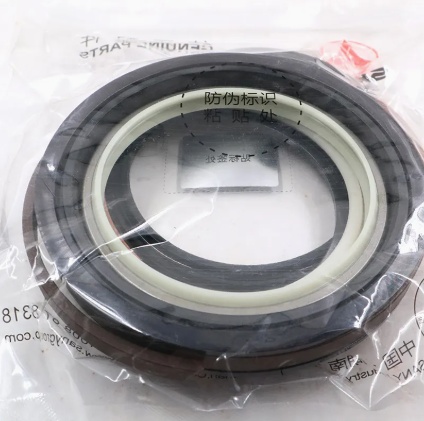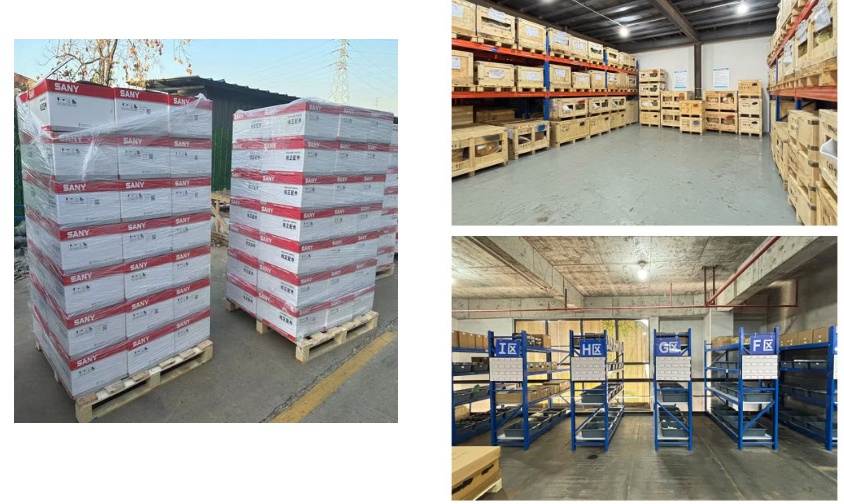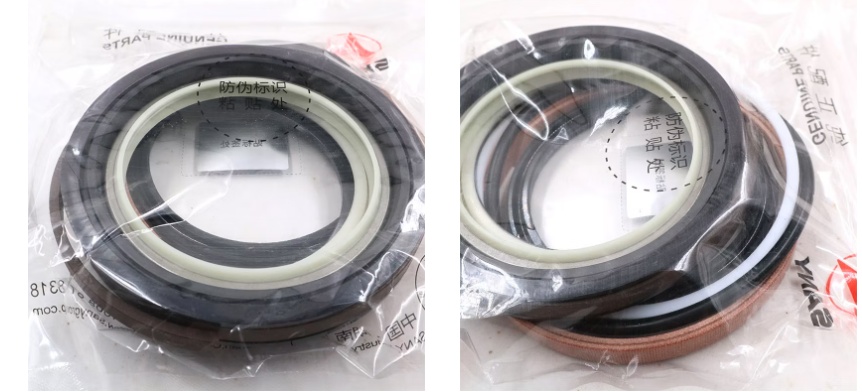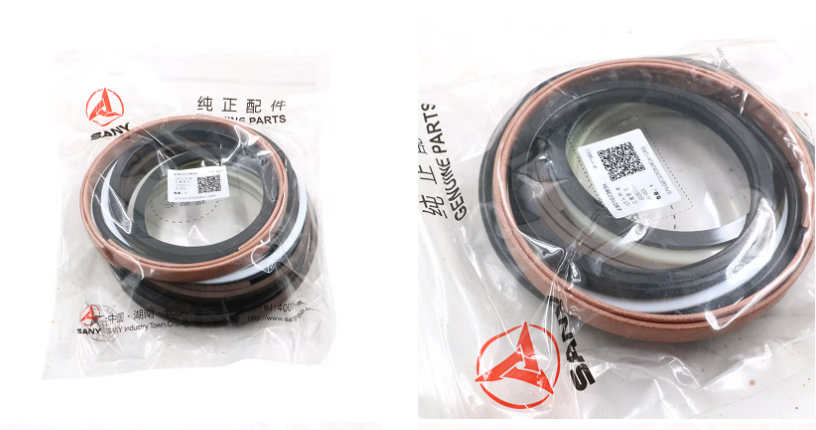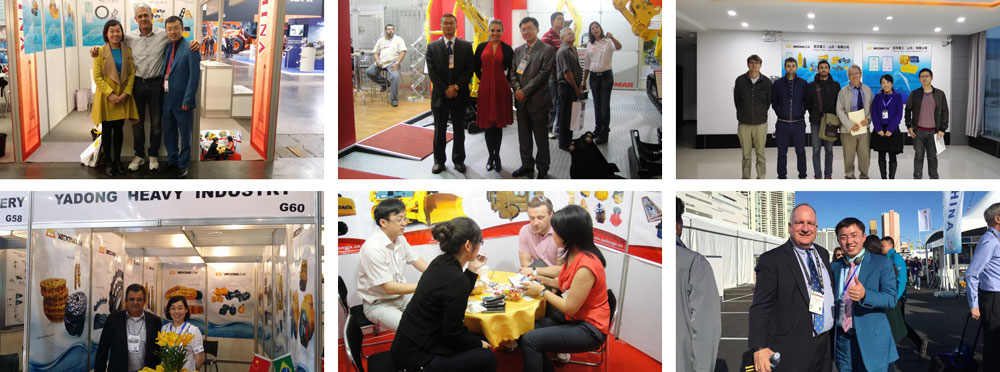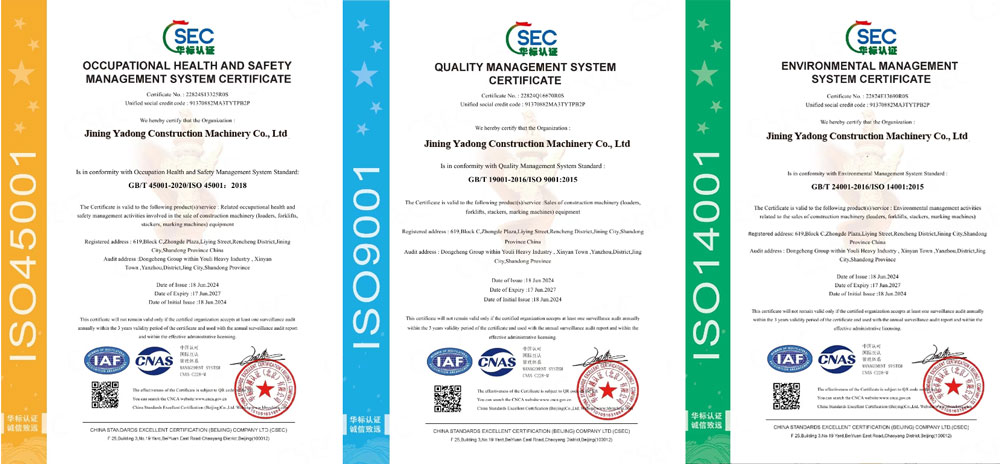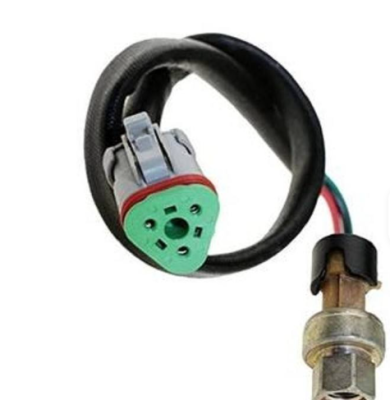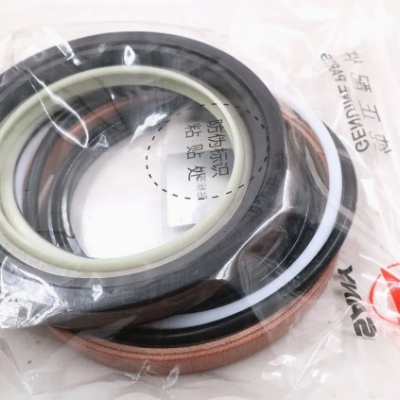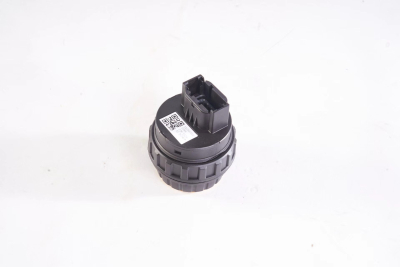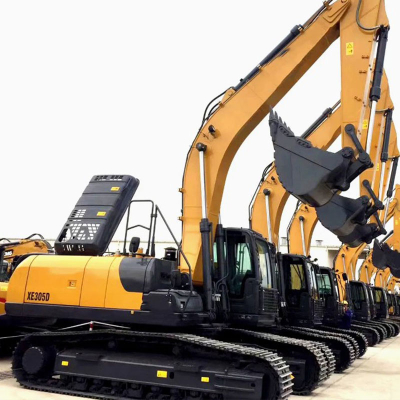Sany 60107383K kit for the repair of the bucket cylinder
1. High -quality components: the main components are made of high -strength wear -resistant materials and are carefully processed, which provides high strength, good shock viscosity and a long service life.
2. High adaptability: specially designed for the Sany excavator cylinder, with accurate sizes, the perfect correspondence of various parts, simple installation and quick maintenance.
3. Excellent seal: seals are made of high -quality rubber, which is resistant to oils and aging, has reliable sealing properties, effectively prevents the leakage of hydraulic oil and ensures stable cylinder operation.
Product representation
I. The composition of the product
The component of the seal: consists of various key seals, which are the core of the repair kit. The sealing ring is made of high elasticity and resistance to aging, which can fit tightly to the compounds of various parts of the cylinder, effectively prevent hydraulic oil leakage and provide stable pressure in the system. The stereo searches are made of special polyurethane material with excellent wear resistance and extrusion resistance, and are usually used to compact a piston rod, which can withstand high working pressure and speed. The dustproof ring usually has a two -layer structure, the outer edge can block dust, dirt, sand and other contaminants in the cylinder, the inner edge can scrape the pollutants attached to the surface of the piston rod to extend the service life of the seals and cylinders.
Guides and supporting parts: the guide sleeve is most often made of copper alloy or highly effective engineering plastic, which has good self-combustion and wear resistance, and can ensure the exact direction of the piston stem to guarantee that it retains straightforwardness during the reciprocating movement, and reduce the wear of the seals Because of the deflection. The supporting ring is usually made of plastic reinforced by fibers, installed on the piston, withstands the lateral force between the piston and the cylinder barrel, prevents the piston displacement during movement, and provides smooth operation of the cylinder.
Other accessories: the kit also includes all types of connecting bolts, nuts and sealing gaskets. The connecting bolts and nuts are made of high -strength alloy steel with anti -corrosion processing, which can be tightened in harsh conditions to ensure a reliable connection of all parts of the cylinder. Sealing gaskets are made of materials resistant to high temperatures and pressure, such as graphite composite gaskets or rubber asbestos gaskets, which can effectively prevent leakage when connecting and ensure the tightness of the cylinder.
Secondly, the advantages of performance
Great tightness: after strict tests for tightness, it can effectively reduce the level of leakage in the cylinder and maintain effective operation of the hydraulic system. Under various conditions of working pressure and sealing temperature, they can maintain good tightness, reduce energy losses and increase equipment efficiency.
High wear resistance: seals, guides and supporting parts are made of high -quality materials with special processing, which have high wear resistance. In the process of prolonged use, they can effectively resist mechanical friction and leaching of hydraulic oil, reduce wear, extend the service life of the repair kit and reduce the costs of equipment maintenance.
Strong adaptability: Sany, cylinders for excavators, cranes, loaders, bulldozers and other Sany equipment, specially designed for various types of cylinders of construction equipment, are perfect. Whether it is a thin cylinder for small equipment or a super -powerful cylinder for large equipment, the repair kit allows you to achieve accurate adaptation and convenient installation to guarantee that the cylinder will restore the best performance.
Below are the common malfunctions of the cylinder of the Sany excavator bucket and the corresponding solutions:
Oil leak
The reason for the refusal: aging, damage or wear of seals are the most common cause of oil leakage. Prolonged use, high temperature, high pressure and other working media accelerate the aging of seals; scratches and wear on the inner wall of the cylinder or the surface of the piston rod destroy the sealing properties between the seal and the cylinder and the stem of the piston; The combination of the oil pipe is weakened, the sealing laying is damaged or the thread on the connection is worn out, which leads to a leakage of hydraulic oil from the compound; The ventilation hole is closed, as a result of which the internal pressure of the cylinder becomes too high, which leads to damage to the seal and leakage of the oil.
Solution: Check the condition of the seals. If they are old, damaged or worn out, replace them with new ones in time. Choose reliable quality seals corresponding to the cylinder models. Minor scratches on the inner wall of the cylinder or the surface of the piston rod can be repaired with grinding. If the wear is serious, the cylinder or the piston rod must be replaced. Check the compounds of the oil pipes, tighten the weakened compounds, replace the damaged sealing gaskets or compounds, and make sure that the compounds are well sealed. Clean the ventilation holes to make sure that they are not clogged so that the internal pressure of the cylinder could be normally balanced.
Slow or weak movements
The reasons for the refusal: insufficient amount of oil in the hydraulic system, which leads to insufficient flow of oil into the cylinder, as a result of which the cylinder moves slowly and weakly; Hydraulic oil is seriously contaminated, and impurities enter the cylinder, which affects the fluidity and transmission of hydraulic oil pressure or blocks the hydraulic valve and the pipeline, which leads to a decrease in oil flow; The internal leak occurs inside the cylinder, for example, damage to the seal of the piston, as a result of which the oil from a high -pressure chamber seeps into a low -pressure chamber, which reduces the working pressure and efficiency of the cylinder; the refusal of the hydraulic pump, for example, wear, damage or deterioration in the performance of the pump, which leads to insufficient output pressure and flow; The pressure of the safety valve settings is too low. When the pressure in the system reaches the configuration of the safety valve, the safety valve opens, as a result of which part of the oil flows back, which reduces the working pressure of the cylinder.
Solution: check the level of hydraulic oil and timely share hydraulic oil that meets the requirements if it is not enough; Regularly replace hydraulic oil and clean the hydraulic system, install a suitable filter for filtering impurities in oil and maintaining oil purity; Check the internal seals of the cylinder, replace damaged seals and eliminate problems with internal leaks; Inspect and repair the hydraulic pump and, if necessary, replace the hydraulic pump with a new one; Check the set pressure of the safety valve, adjust it in accordance with the requirements of the equipment operating manual and make sure that the safety valve works at appropriate pressure.
Abnormal noise of the oil cylinder
The cause of the malfunction: inside the cylinder is the air. When the cylinder is in motion, the air compresses and expands, producing the sound of bursting bubbles; The gap between the piston rod and the guide sleeve is too large or too small, which leads to increased friction and abnormal noise; The gap between the piston and the cylinder is wrong. For example, if the gap is too large, the piston sways in the cylinder and hits the inner wall of the cylinder, producing abnormal noise; The buffer device inside the cylinder is damaged, and at the end of the cylinder stroke it does not play an effective buffer role, which leads to the collision of the piston with the end of the cylinder.
Solution: release air from the cylinder. Usually at the highest point of the cylinder there is a exhaust valve. Open the exhaust valve and make the cylinder to make a reciprocating movement several times to release the internal air. Check the gap between the piston rod and the guide sleeve. If the gap is too large or too small, adjust or replace the guide sleeve. Check the gap between the piston and the cylinder sleeve and, if necessary, repair or replace the parts. Check the buffer device, repair or replace damaged buffer devices to ensure their normal operation.
The oil cylinder stuck or slides
The cause of the malfunction: the air that enters the hydraulic system increases the compressibility of oil, which leads to the unstable movement of the cylinder; wear and poor lubrication of the guides or sliders of the cylinder increase friction resistance, which leads to jamming or slipping of the cylinder during movement; The gap between the piston and the cylinder body is uneven, which leads to uneven effort on the piston during movement, which leads to jamming; The viscosity of hydraulic oil is too high or too low, which affects the fluidity of the oils and the working characteristics of the cylinder.
Solution: remove air from the hydraulic system and make sure that the system is well sealrated to prevent re -air; Check the guides and sliders of the cylinder, repair or replace them in time if they are worn out, and add grease regularly to ensure good lubrication; Check the gap between the piston and the cylinder and, if necessary, adjust or repair it; Select hydraulic oil with suitable viscosity and use it correctly in accordance with the ambient temperature and equipment requirements to avoid deterioration in the cylinder productivity due to problems with the viscosity of the oil.
The cylinder cannot move
The reason for the refusal: the refusal of the hydraulic system, for example, a non -working hydraulic pump, jamming the hydraulic valve, clogging of the pipeline, etc., as a result of which the oil under pressure does not enter the cylinder; The cylinder control components, for example, reversing valves, electromagnetic valves, etc., fail and cannot normally control the cylinder movement; The mechanical malfunction inside the cylinder, for example, breakdown of the piston rod, jamming the piston, etc., does not allow the cylinder to move normally.
Solution: Check the hydraulic system, including a hydraulic pump, a hydraulic valve, a pipeline, etc., find a malfunction and repair or replace it; Check the cylinder controls, repair or replace the damaged reverse valve, electromagnetic valve, etc.; Disassemble the cylinder for inspection, repair or replace damaged internal parts, such as the piston rod, piston, etc.
The Sany excavator bucket cylinder is a hydraulic cylinder. The principle of its operation is based on the principle of Pascal, that is, the pressure applied to any part of the closed fluid should be transmitted by liquid in all directions in accordance with its original size. The following description is given:
The supply and injection of hydraulic oil: when the hydraulic system of the excavator works, the hydraulic pump sucks hydraulic oil from the oil tank, pumps it through the oil pipe and supplies to the bucket cylinder. In a certain position of the reversible valve, the oil under high pressure enters the seamless cylinder chamber (a chamber on one side of the piston, which has a large efficient working area). Since hydraulic oil is under pressure, it is an effort on the piston, forcing it to move in the cylinder. According to the principle of Pascal, the pressure of hydraulic oil will act evenly on the entire area of the piston, thereby creating a lot of traction. This traction is transmitted to the mechanism of clutch of the bucket through the piston rod, forcing the bucket to perform actions for digging or loading.
Oil return and piston movement: when the piston moves, hydraulic oil in the cylinder rod chamber (the chamber on the side where the piston rod extends, which has a smaller efficient working area) is squeezed out. A squeezed hydraulic oil is returned to an oil tank through an oil pipe or enters other parts of the hydraulic system. In this process, the direction of movement and the speed of the cylinder can be achieved by controlling the direction and consumption of the flow of hydraulic oil.
Reverses and reverse movement: when the bucket must be moved in the opposite direction, the direction of the flow of hydraulic oil changes using a reverse valve, so that the oil under high pressure enters the cylinder rod chamber. At this time, due to the low efficient working area of the rod, the rod created by the same pressure is relatively small, but it can make the piston move in the opposite direction, forcing the bucket to unload or perform other actions. At the same time, hydraulic oil in a basket chamber returns to an oil tank or enters other parts of the hydraulic system.
Buferization and control: to prevent a strong collision of the piston with the cylinder at the end of the move, some bucket cylinders are also equipped with buffer devices. When the piston approaches the end of its course, the buffer device gradually increases the resistance to the return of the oil, gradually slowing down the speed of the piston, thereby achieving the effect of buffering. In addition, by adjusting the pressure valve and the flow valve in the hydraulic system, you can accurately control the working pressure and speed of the bucket cylinder to meet various operational requirements.
In short, the Sany excavator bucket cylinder implements various bucket movements by transmitting pressure and control of hydraulic oil, providing power support for the excavator.
Exhibition cabinets
Acquaintance with the plant
The plant operates a team of highly qualified and experienced engineers who continuously introduce technological innovations and improve products. Currently, the company has a number of independent intellectual property rights and patented technologies. The manufactured construction equipment includes a wide range of equipment such as excavators, loaders, taps, bulldozers and other machines. Products are highly productivity, reliability, energy efficiency and environmental friendliness, as well as the ability to adapt to difficult operating conditions in various climatic and working media around the world.
Awards and fightsFixation
frequently asked questions
1. In which countries are we exporting?
Asia: Vietnam, India, Indonesia, Pakistan, Kazakhstan, Uzbekistan, etc.
Europe: Russia, Belarus, Ukraine, Lithuania, Saudi Arabia, etc.
South America: Brazil, Chile, Paraguay, Argentina, etc.
Africa: South Africa, Ethiopia, Libya, etc.
2. What kind of payment conditions can we accept?
Usually we can work on T/T, 30% TT before production and 70% TT before shipping
3. What ways can we work for delivery?
1) for most countries in Europe, South America and Africa, etc. We can go along the container or Roro through the ocean freight.
2) for neighboring countries of China, such as Russia, Vietnam, Kazakhstan, Uzbekistan, etc. We can deliver by road or railway.
3) for light spare parts in the urgent requirement, we can send it using the international courier service, such as DHL, TNT, EMS or other air transportation.
4. How can you guarantee that you delivered goods to customers?
A: We will provide you with complete information about delivery for you.
5. What are our advantages compared to other manufacturers/factories?
1) Reliable quality: we carefully choose permanent manufacturers to support spare parts, such as engines, bridges, transmission, and many parts developed and produced by us always adapting the best materials.
2) a competitive price: the concentration of mechanized production in large quantities reduces production costs to ensure a competitive price.
3) The service team: firstly, our sales managers work 24 hours a day, are ready to answer your questions at any time. Secondly, a professional training team with senior equipment, ready to provide support services to users and dealers. Most problems can be solved within 24 hours.
4) Fast delivery: As a rule, we can deliver within 10 working days at the plant after receiving prepayment from customers.
6. How can you provide customers after sales service?
A: We will answer you at first and help you solve problems within 24 hours. If we really need your local, we
We will send your professional person to your settlement to help you solve problems without any fluctuations, supply you with comprehensive

